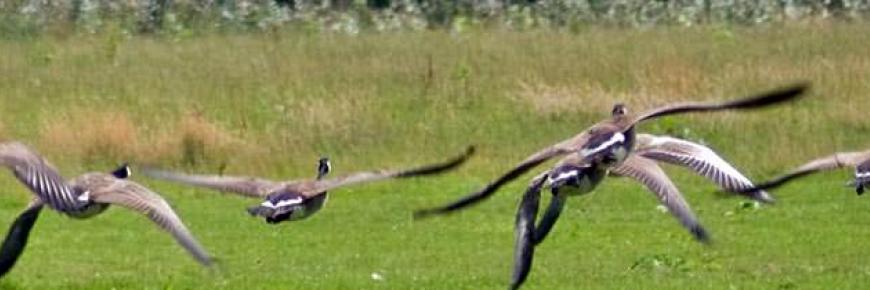Another non-native species bee-having badly
 Oh Bee-have!
Oh Bee-have!
A new arrival to Europe has left beekeepers and the agricultural industry seriously concerned.
The Asian hornet (Vespa velutina), introduced to Europe in 2004, has a sweet tooth for honeybees, able to destroy an entire hive in a matter of hours. The arrival of this species is of particular concern for Europe with many of our pollinators suffering population declines. The European honeybee (Apis mellifera) is anticipated to be the main victim of the Asian hornet’s arrival yet is also our most popular commercial pollinator raising concerns for the agricultural industry.
In their natural surroundings, an Asian hornet ‘scout’ will arrive at a honey bee hive, releasing pheromones to guide reinforcements to the colony. They will then destroy the hive, killing all inhabitants and taking the ‘loot’ back to their own nest to feed their larvae.
Having lived with the Asian hornet for so long, the Asian honey bee (Apis cerana) has evolved a defence tactic to protect their colonies from this voracious predator.
When the scout hornet arrives, honey bees recognise the hornet’s pheromones and gather around the entrance of the hive in a tight mass. The unsuspecting hornet continues to approach the hive and is ambushed by the honey bee mob which surrounds the hornet in a tight ball. The bees then vibrate themselves, raising the temperature inside the ball to over 46 ºC and depleting the ball of oxygen; killing the scout Asian hornet. Watch the Video!
So what’s all the buzz about?
Although our native European honey bees have similar tactics to defend themselves against our native hornets, their tactics fail to work against the non-native Asian hornet; leaving their hives and colonies vulnerable to attack. Lacking this innate defence could lead to further reductions in honeybee populations acrossEurope, having serious consequences for our agricultural industry.
So bee on guard and keep your eyes peeled for this new attacker.
If you wish to read more about this invasive species or report a suspected sighting visit: https://secure.fera.defra.gov.uk/nonnativespecies/alerts/index.cfm?id=4
References:
Mollet, T and de la Torre, C (2006). ‘Vespa velutina – The Asian Hornet’. Bulletin Technique Apicole. 33: 203-208.
Perrard, A., Haxaire, J., Rortais, A & Villemant, C (2009). ‘Observations on the colony activity of the Asian Hornet, Vespa velutina Lepeletier 1836 in France.’ Annales de la Société entomologique de France. 45: 119 – 127
Potts, S. G., Biesmeijer, J. C., Kremen, C., Neumann, P., Schweiger, O & Kunin, W. E (2010). ‘Global pollinator declines: trends, impacts and drivers’. Trends in ecology and evolution. 25: 345-353.
Rortais, A., Villemant, C., Gargominy, O., Rome, Q., Haxaire, J., Papachristoforou, A & Arnold, G (2010). ‘A new enemy of honeybees in Europe: The Asian hornet Vespa velutina.’ Settele, J. Ed., Atlas of Biodiversity Risks—From Europe to the Globe, From Stories to Maps. Pensoft, Sofia 11.
Photo Credit: Asian Hornet (Thomas H Brown)

